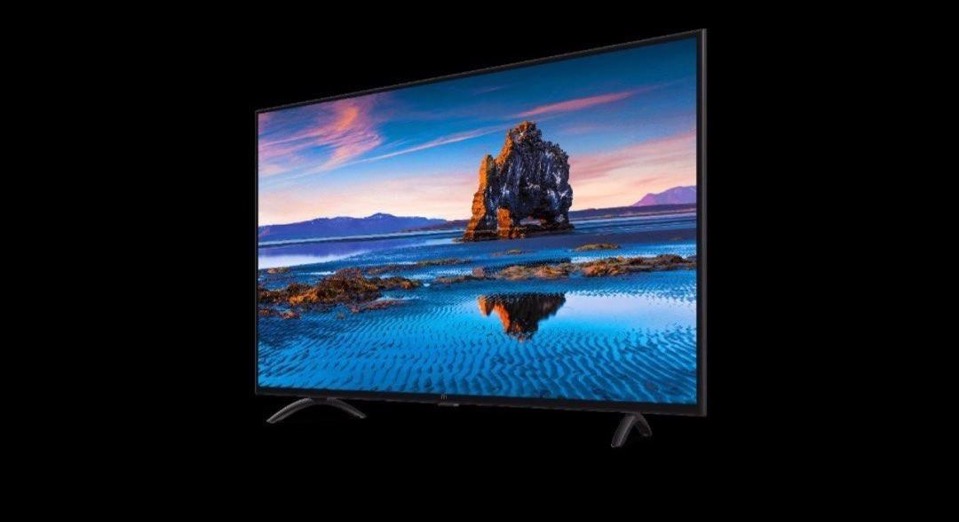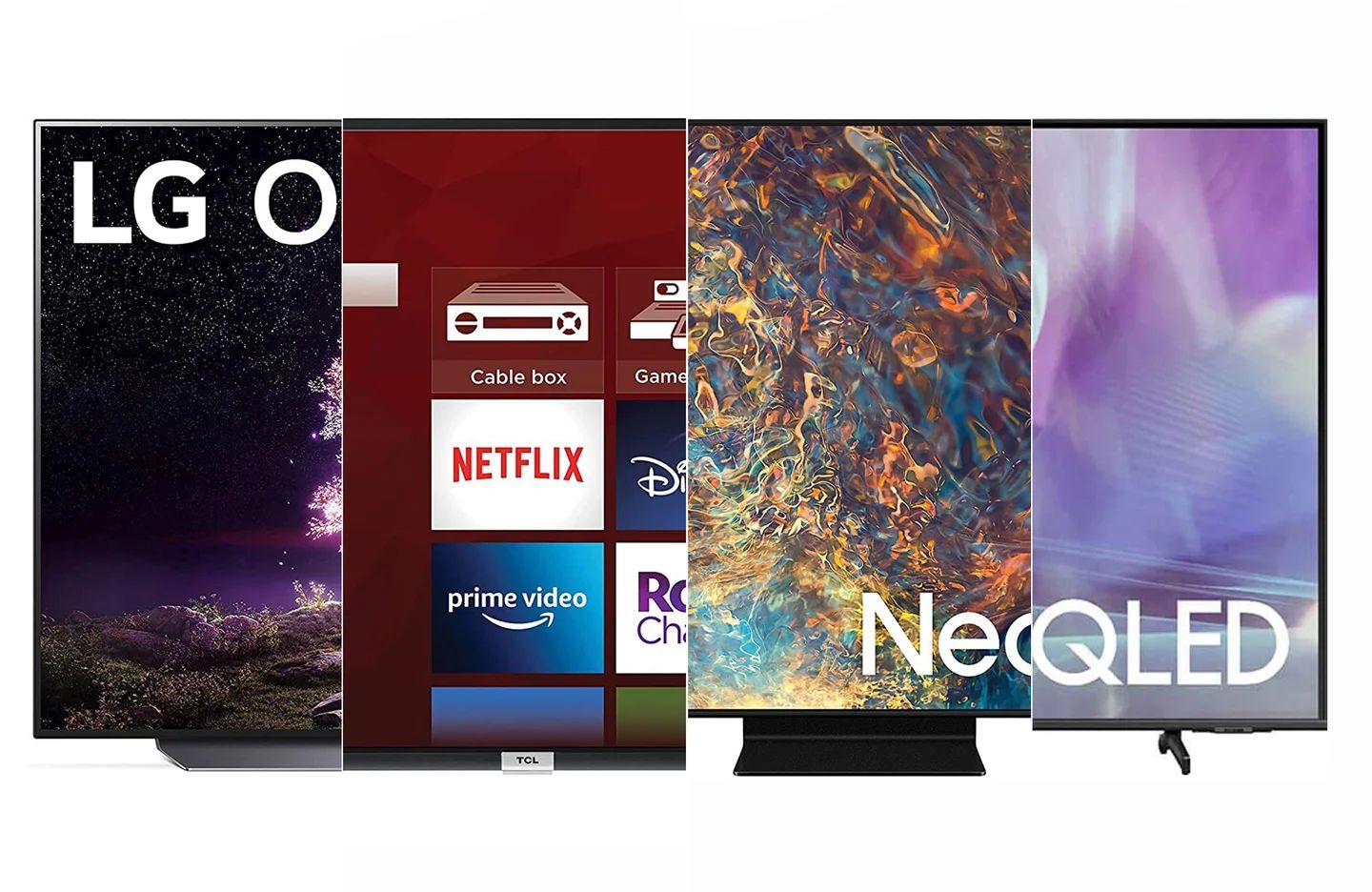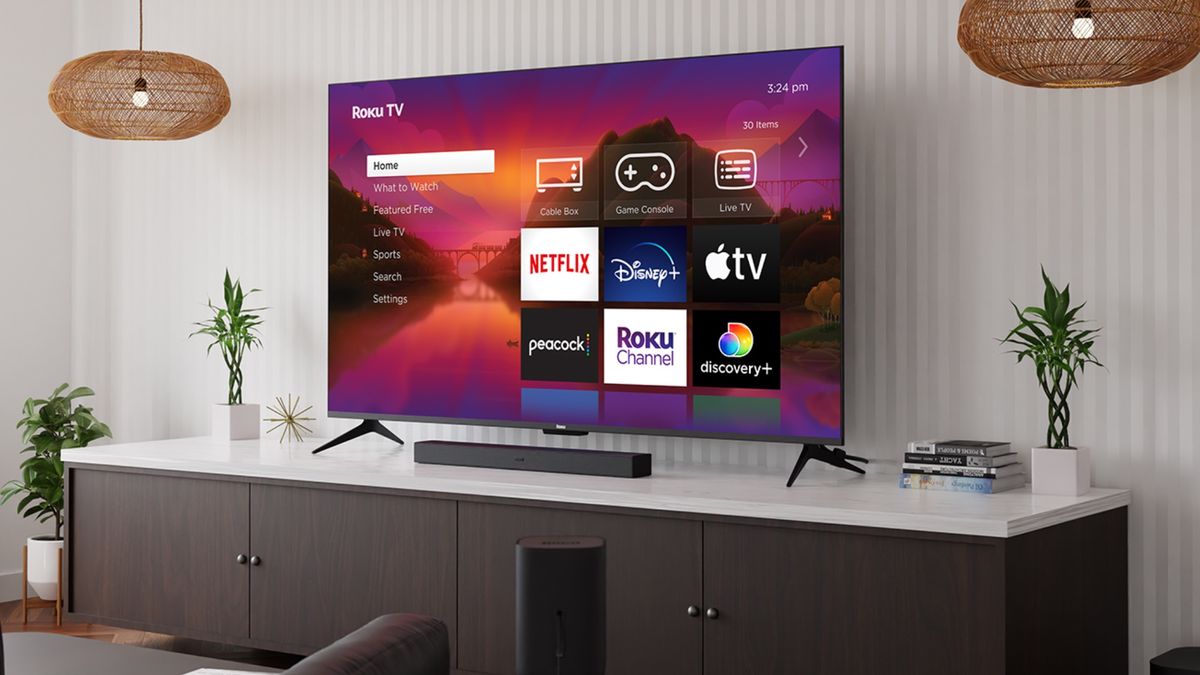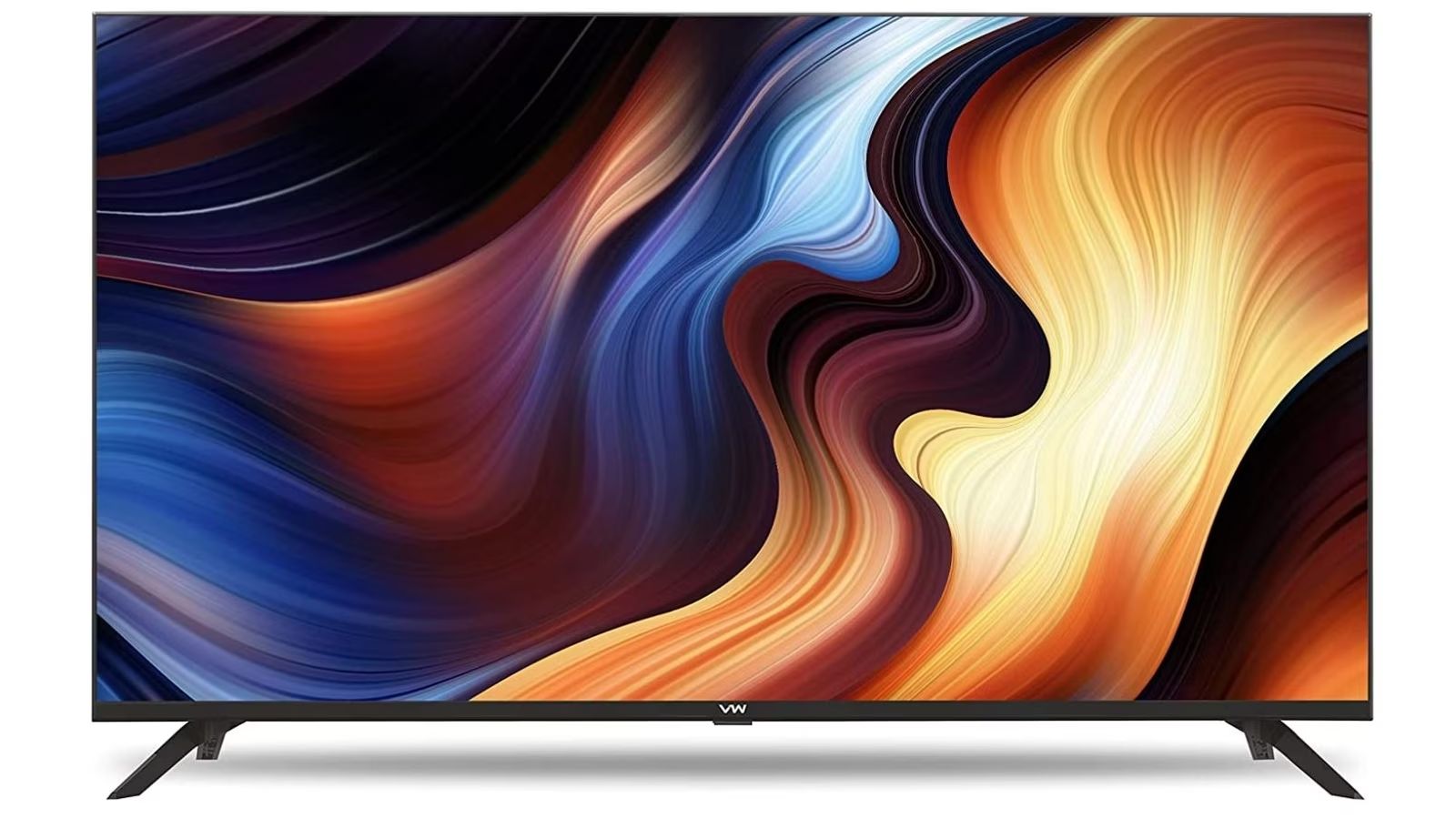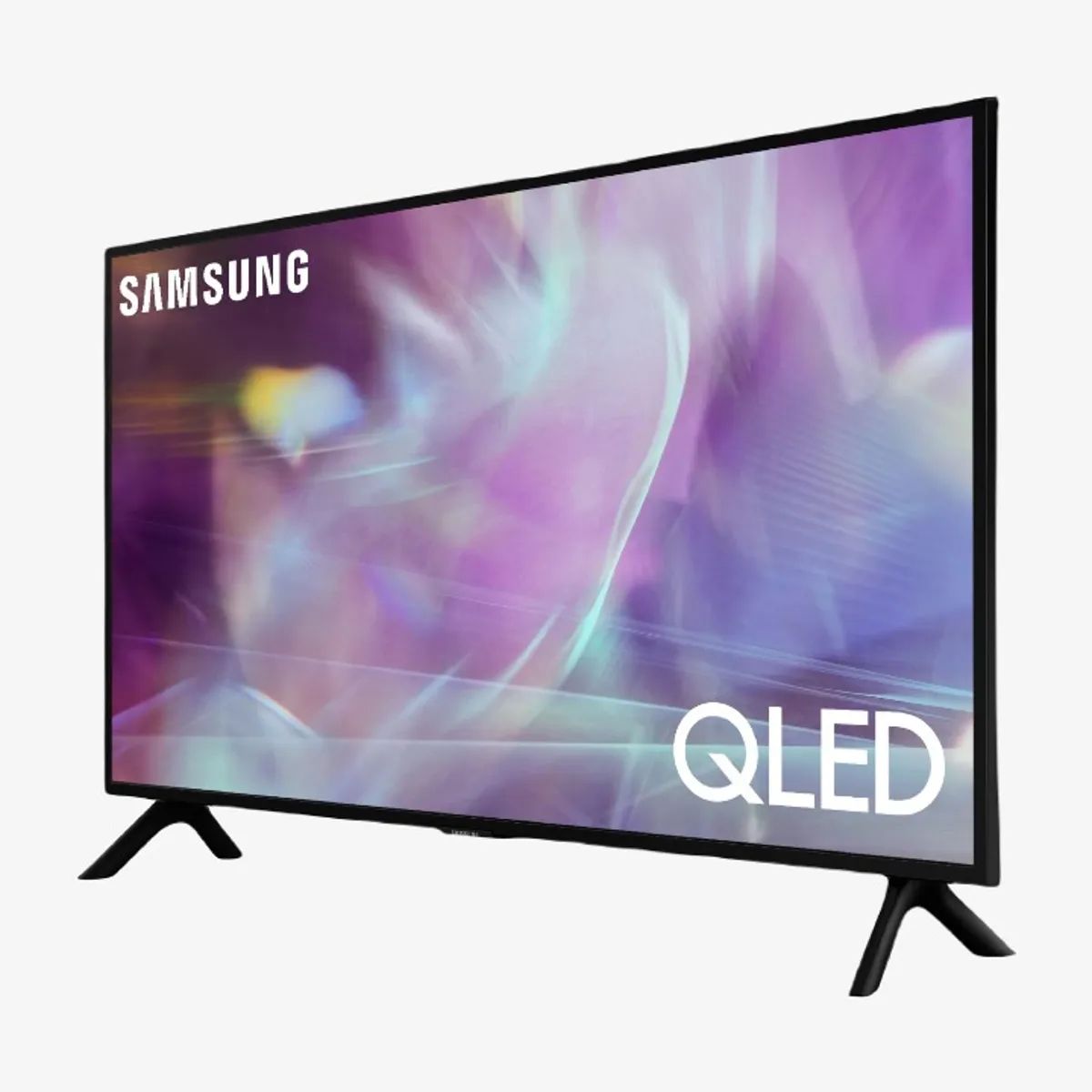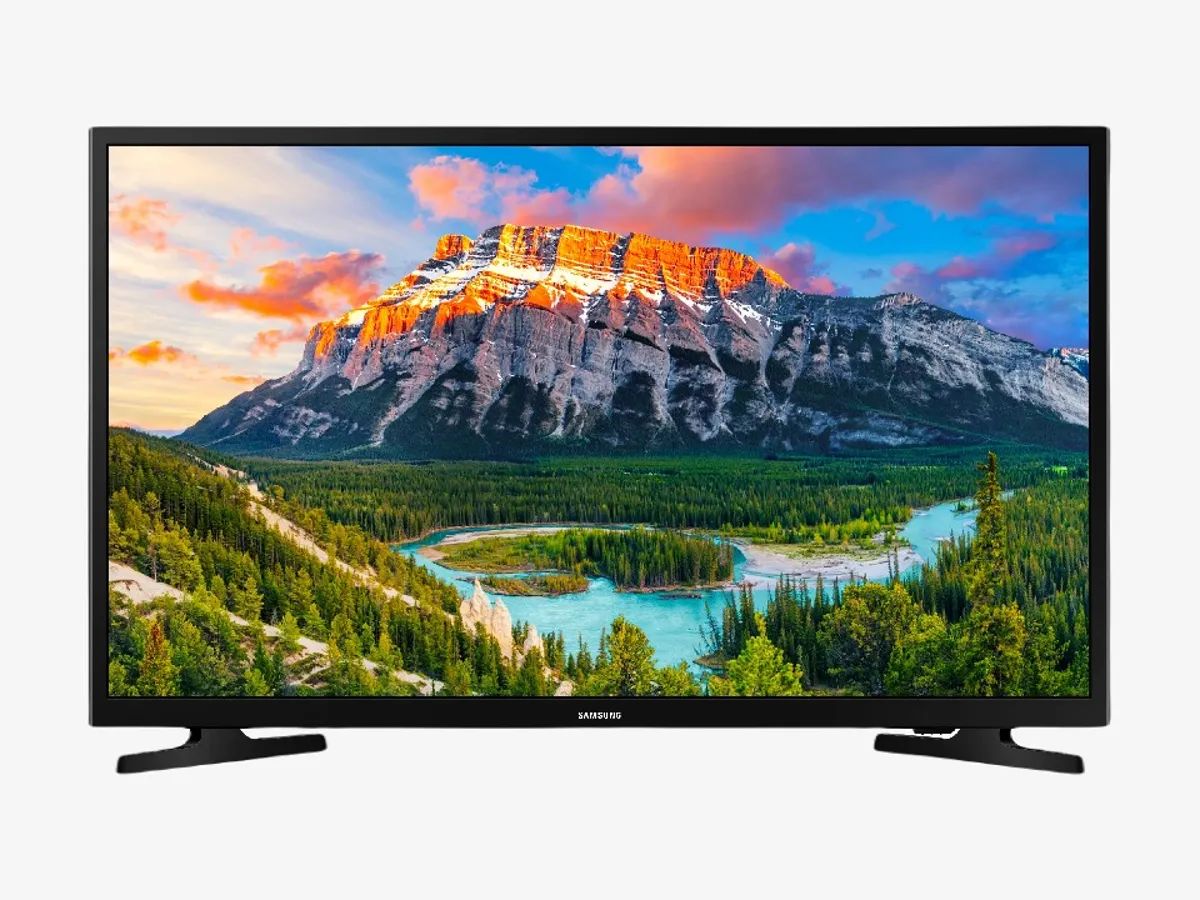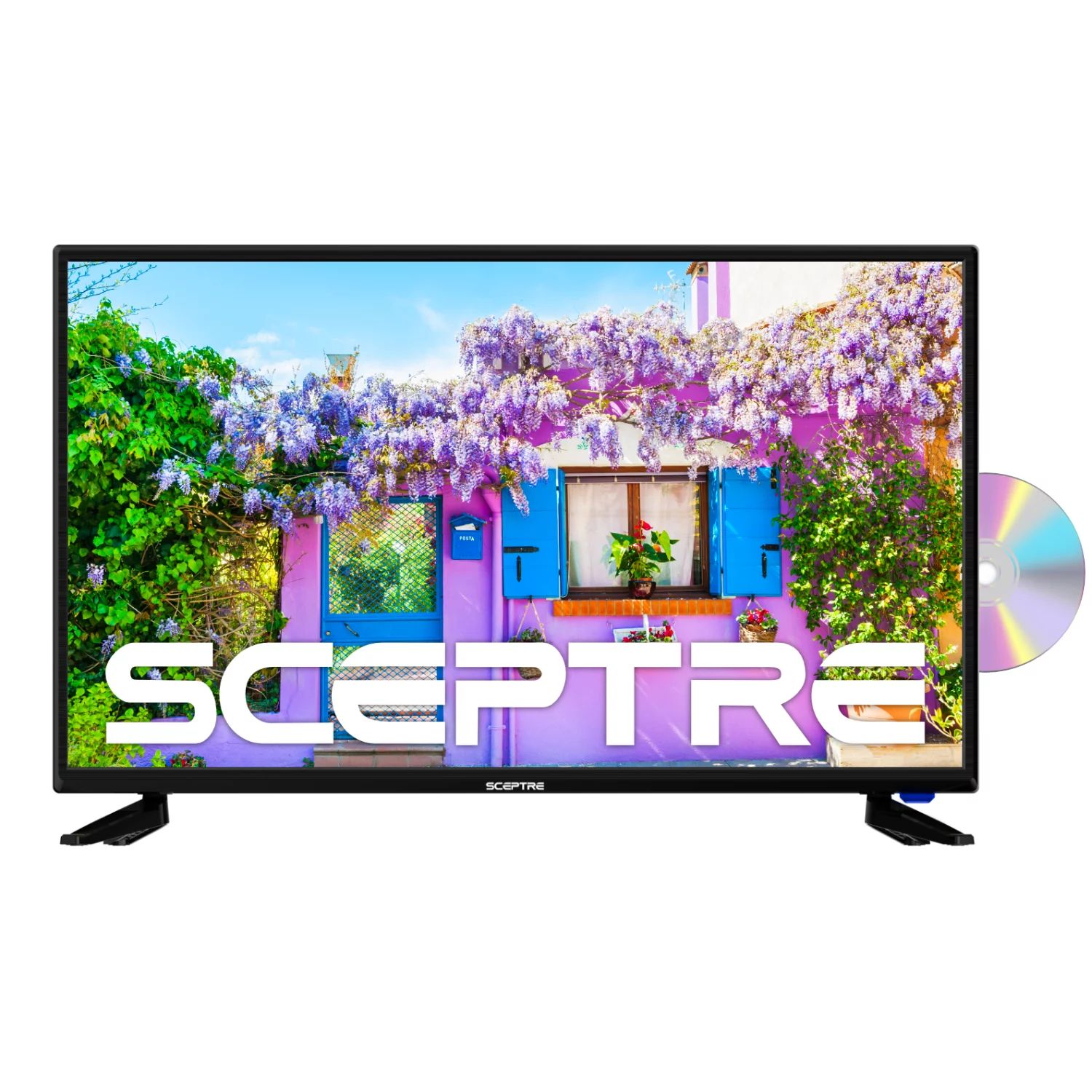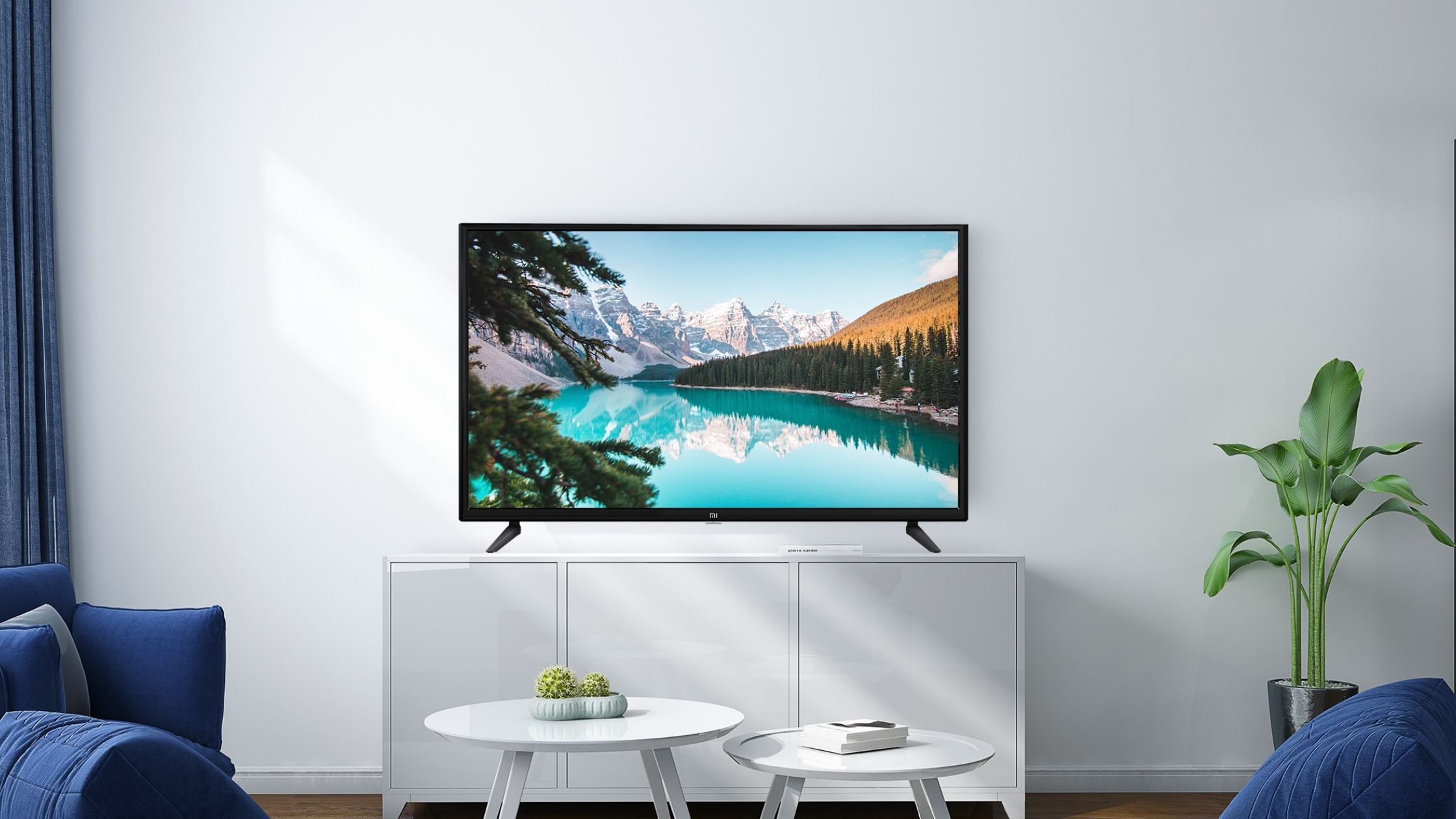Introduction
Welcome to our informative guide on Full HD LED TVs! In today’s digital world, televisions have become an integral part of our lives, providing us with entertainment and connectivity like never before. With so many options available in the market, it can be overwhelming to choose the right TV for your needs. This is where Full HD LED TVs come into the picture.
Full HD LED TVs have gained popularity in recent years due to their superior picture quality and energy-efficient technology. Whether you’re a cinephile, avid gamer, or simply enjoy relaxing with your favorite shows, a Full HD LED TV can elevate your viewing experience to new heights.
In this guide, we will explore what exactly a Full HD LED TV is, how it works, the benefits it offers, and what factors to consider when buying one. Additionally, we will compare Full HD LED TVs to other types of televisions and highlight popular brands in the market. Lastly, we will provide some tips for setting up and optimizing your Full HD LED TV to ensure the best viewing experience.
So, if you’re ready to enhance your home entertainment system and embrace the world of Full HD LED TVs, let’s dive in!
What is a Full HD LED TV?
A Full HD LED TV, also known as a Full High Definition Light Emitting Diode TV, is a type of television that provides a high-resolution picture display combined with the energy-efficient LED technology. It is a significant improvement over older display technologies, such as CRT and LCD TVs. Full HD refers to the resolution of the TV, while LED refers to the lighting technology used in the display panel.
The term “Full HD” indicates that the TV has a resolution of 1920 x 1080 pixels, which means it can display images with exceptional clarity and detail. This resolution is considered the standard for high-definition content, ensuring sharp and vibrant visuals. The LED technology used in these TVs offers a wide range of colors and excellent contrast levels, resulting in lifelike images with enhanced depth and realism.
LED technology utilizes light-emitting diodes to illuminate the display panel of the TV. These diodes are arranged in grids or clusters behind the screen and emit light when an electrical current passes through them. The advantage of LED technology is that it allows for precise control of the backlighting, resulting in better contrast, improved black levels, and reduced power consumption compared to traditional LCD TVs.
In addition to their stunning picture quality, Full HD LED TVs are known for their sleek and slim designs. The LED backlighting system is incredibly thin, enabling manufacturers to create slim bezels and slim-profile TVs. This makes Full HD LED TVs perfect for modern homes where minimalist aesthetics are desired.
Furthermore, Full HD LED TVs often come equipped with advanced features like smart functionality, Wi-Fi connectivity, and multiple HDMI and USB ports. These features allow you to stream online content, connect external devices, and enjoy various multimedia options, expanding the possibilities of entertainment right at your fingertips.
With their superior picture quality, energy efficiency, slim design, and advanced features, Full HD LED TVs have become the go-to choice for many consumers looking to elevate their home entertainment experience.
How does an LED TV work?
To understand how an LED TV works, it’s important to first know that LED stands for Light Emitting Diode. Unlike traditional LCD TVs that use cold cathode fluorescent lamps (CCFLs) to provide backlighting, LED TVs utilize a grid or cluster of tiny light-emitting diodes as the source of illumination.
When you turn on an LED TV, electrical current flows through the LEDs, causing them to emit light. These LEDs are divided into zones or individually controlled to provide precise control over the brightness and contrast levels. This dynamic backlighting system enhances the picture quality by delivering deeper blacks, brighter whites, and a wider color gamut.
LED TVs primarily use two types of LED backlighting technologies: edge-lit LED and direct-lit LED. In edge-lit LED TVs, the LEDs are located along the edges of the screen and direct the light towards the center. This design allows for slim and lightweight TVs. However, the uniformity of brightness across the screen may not be as precise as direct-lit LED TVs.
On the other hand, direct-lit LED TVs have LEDs positioned in a grid pattern behind the entire screen. This ensures more consistent brightness across the display and the ability to dim specific areas, resulting in improved contrast and black levels.
One of the key advantages of LED TVs over other types of televisions is their energy efficiency. LED backlighting consumes significantly less power compared to the CCFL backlighting used in LCD TVs, resulting in lower electricity costs and reduced environmental impact.
LED TVs also offer faster refresh rates, which are crucial for smooth motion reproduction, especially when watching sports or playing fast-paced video games. Higher refresh rates, typically measured in Hertz (Hz), minimize motion blur and ensure a more lifelike and fluid viewing experience.
Additionally, LED TVs often incorporate advanced image processing technologies to enhance the picture quality further. These technologies can include local dimming, which selectively dims areas of the screen to achieve deeper blacks and better contrast, and HDR (High Dynamic Range), which expands the range of colors and delivers more vibrant and realistic visuals.
In summary, an LED TV works by utilizing light-emitting diodes to provide backlighting, resulting in improved picture quality, energy efficiency, and advanced features that enhance the overall viewing experience.
Benefits of Full HD LED TVs
Full HD LED TVs offer several advantages that make them a popular choice among consumers. Let’s explore some of the key benefits that these TVs provide:
- Superior Image Quality: Full HD LED TVs deliver exceptional picture quality with their high resolution of 1920 x 1080 pixels. This resolution ensures sharp details, vibrant colors, and realistic visuals, immersing you in a captivating viewing experience.
- Energy Efficiency: LED TVs are known for their energy-efficient design. The LEDs used in the backlighting consume less power compared to traditional LCD TVs, resulting in reduced electricity costs and a smaller environmental footprint.
- Wide Color Gamut: LED technology allows for a wider color gamut, enabling the TV to display a broader range of vibrant and accurate colors. This enhances the overall visual experience, making the images on the screen look more lifelike and vivid.
- Better Contrast and Black Levels: Full HD LED TVs often incorporate advanced features like local dimming, which allows specific areas of the screen to be dimmed to achieve deeper blacks and improved contrast. This enhances the overall picture quality, bringing out finer details and creating a more immersive viewing experience.
- Slim and Sleek Design: LED technology enables manufacturers to create slim and lightweight TVs. This results in sleek and elegant designs with thin bezels, which not only enhance the aesthetic appeal but also make Full HD LED TVs an ideal choice for modern home interiors.
- Faster Refresh Rates: LED TVs typically offer higher refresh rates, ensuring smoother motion reproduction. This is essential for activities like watching sports or playing fast-paced video games, as it reduces motion blur and provides a more enjoyable and immersive viewing experience.
- Advanced Features: Full HD LED TVs often come equipped with advanced features like smart functionality, Wi-Fi connectivity, and multiple HDMI and USB ports. These features allow you to access online streaming services, connect external devices, and enjoy a wide range of entertainment options right from your TV.
With their superior image quality, energy efficiency, slim design, enhanced colors, and advanced features, Full HD LED TVs offer a compelling package for anyone looking to upgrade their home entertainment system.
Factors to consider when buying a Full HD LED TV
When purchasing a Full HD LED TV, it’s essential to consider various factors to ensure that you make the right choice. Here are some key factors to keep in mind:
- Screen Size: Determine the ideal screen size based on the viewing distance and the available space in your room. A larger screen creates a more immersive experience, but it’s crucial to maintain an appropriate distance between the TV and the viewer for optimal viewing comfort.
- Resolution: Full HD LED TVs have a resolution of 1920 x 1080 pixels, which is suitable for most viewing needs. However, if you have access to 4K content or plan to upgrade your content sources in the future, you may consider opting for a 4K Ultra HD TV for even higher resolution.
- Refresh Rate: Look for a TV with a higher refresh rate (typically measured in Hertz or Hz) for smoother motion reproduction, especially if you enjoy watching fast-paced sports or playing action-packed video games.
- Smart Features: Consider whether you want your TV to have smart functionality. Smart TVs allow you to access streaming services, browse the internet, and use a wide range of applications. Look for features like built-in Wi-Fi connectivity and app support to enhance your entertainment options.
- Connectivity: Check the number and type of ports available on the TV. Ensure that it has sufficient HDMI, USB, and audio ports to connect various devices such as gaming consoles, Blu-ray players, soundbars, and external storage.
- Contrast Ratio: A higher contrast ratio ensures better differentiation between dark and light areas on the screen. Look for TVs with higher contrast ratios to enhance the depth and details in your viewing experience, especially during dark scenes.
- Sound Quality: Consider the built-in speakers of the TV. While external sound systems can enhance the audio experience, TVs with quality built-in speakers can provide decent sound output, avoiding the need for immediate additional audio equipment.
- Brand and Reputation: Research and choose reputable brands known for their quality and customer support. Read reviews and consider the brand’s reputation when it comes to warranty, durability, and after-sales service.
- Price and Value: Set a budget and compare the features and specifications offered by different models within that price range. Look for a TV that provides the best value for your money, considering the combination of features, picture quality, durability, and brand reputation.
By considering these factors, you can make an informed decision and choose a Full HD LED TV that meets your needs and provides an enjoyable and immersive viewing experience.
Comparison between Full HD LED TVs and other types of televisions
When it comes to choosing a TV, it’s essential to understand the differences between Full HD LED TVs and other types of televisions in the market. Here, we will compare Full HD LED TVs with two commonly known types: LCD TVs and OLED TVs.
- Full HD LED TVs vs. LCD TVs:
- Picture Quality: Full HD LED TVs offer superior picture quality compared to LCD TVs. LED backlighting provides a wider color gamut, better contrast, and improved black levels, resulting in more vibrant and realistic visuals.
- Energy Efficiency: LED TVs are more energy-efficient than LCD TVs, as they consume less power. This not only reduces electricity costs but also helps in reducing carbon footprint.
- Black Levels: Full HD LED TVs can achieve deeper blacks and better contrast levels with technologies like local dimming, whereas LCD TVs rely on CCFL tubes for backlighting, which may result in less accurate black levels.
- Viewing Angles: LCD TVs often have limited viewing angles, meaning the picture quality may degrade when viewed from the side. Full HD LED TVs generally offer wider viewing angles, allowing a better viewing experience from various seating positions.
- Design: LED TVs are known for their sleek and slim designs due to the thinness of LED backlighting. LCD TVs, on the other hand, may have bulkier designs due to the inclusion of CCFL tubes.
- Full HD LED TVs vs. OLED TVs:
- Picture Quality: OLED TVs offer exceptional picture quality with their self-illuminating pixels, providing true blacks, infinite contrast, and vibrant colors. While Full HD LED TVs still offer impressive visuals, OLED TVs take it a step further in terms of picture quality.
- Energy Efficiency: OLED TVs are generally more energy-efficient than LED TVs since each pixel in an OLED panel can be individually turned off, resulting in energy savings when displaying dark scenes. However, LED TVs can still offer excellent energy efficiency compared to other types of televisions.
- Price: OLED TVs tend to be more expensive than Full HD LED TVs, primarily due to the manufacturing process and materials involved. LED TVs, including Full HD models, provide a more affordable option without compromising on picture quality.
- Burn-in Potential: OLED TVs have a potential risk of burn-in, where persistent static images may cause permanent damage to the screen over time. This is not a concern with Full HD LED TVs, as they do not suffer from burn-in issues.
- Size Availability: Full HD LED TVs are more readily available in a wider range of screen sizes compared to OLED TVs. This allows for more flexibility in choosing the perfect size to fit your space and viewing preferences.
Ultimately, the choice between Full HD LED TVs, LCD TVs, and OLED TVs depends on your specific requirements, budget, and viewing priorities. While OLED TVs offer the pinnacle of picture quality, Full HD LED TVs strike a balance between affordability, energy efficiency, and excellent display performance.
Popular brands for Full HD LED TVs
When it comes to Full HD LED TVs, there are several reputable brands known for their quality, reliability, and innovative features. Let’s take a look at some of the popular brands that offer exceptional Full HD LED TVs:
- Samsung: Samsung is a renowned brand known for its cutting-edge technology and sleek designs. They offer a wide range of Full HD LED TVs that combine excellent picture quality with smart features, making them a popular choice among consumers.
- Sony: Sony is synonymous with superior image and sound quality. Their Full HD LED TVs deliver immersive viewing experiences with vibrant colors, sharp details, and powerful audio. Sony TVs often come with advanced features like Android TV and support for popular streaming services.
- LG: LG is known for its OLED technology, but they also produce impressive Full HD LED TVs. LG’s LED TVs offer excellent picture quality, sleek designs, and intuitive smart features. Their TVs are often equipped with webOS, providing a user-friendly interface and access to a wide range of apps.
- TCL: TCL has gained popularity for offering feature-packed Full HD LED TVs at affordable prices. Their TVs combine good picture quality, smart features, and stylish designs. TCL is known for its Roku TV platform, providing a seamless streaming experience with access to numerous channels and apps.
- Hisense: Hisense offers budget-friendly Full HD LED TVs without compromising on quality. Their TVs provide good picture performance, smart features, and a range of screen sizes to suit different preferences. Hisense TVs often come with popular streaming apps pre-installed, providing easy access to online content.
- Panasonic: Panasonic is a trusted brand known for its reliable and high-quality TVs. Their Full HD LED TVs deliver excellent picture quality and advanced features, such as HDR support and My Home Screen, which allows personalized access to your favorite content.
- Sharp: Sharp produces Full HD LED TVs known for their durability and solid performance. They offer value-for-money options with good picture quality and user-friendly interfaces. Sharp TVs often come with built-in apps and connectivity options for seamless streaming and device integration.
It’s important to note that popularity and availability may vary depending on the region. Before making a purchasing decision, it’s recommended to research and compare models from different brands to find the one that best fits your needs, preferences, and budget.
Tips for setting up and optimizing your Full HD LED TV
Once you have purchased a Full HD LED TV, follow these tips to ensure proper setup and optimize your viewing experience:
- Placement and Positioning: Choose a suitable location for your TV, considering factors like viewing distance, lighting conditions, and wall mounting options. Ensure that the TV is positioned at eye level for comfortable viewing.
- Connectivity: Use high-quality HDMI cables to connect external devices like gaming consoles, Blu-ray players, soundbars, or home theater systems. This ensures optimal audio and video quality and minimizes signal degradation.
- Picture Settings: Adjust the picture settings on your TV to your liking. Many Full HD LED TVs have preset picture modes (e.g., Standard, Cinema, Game) that you can choose from and further customize. Consider adjusting settings like brightness, contrast, color temperature, and sharpness to suit your preferences.
- Sound Settings: Customize the sound settings based on your preferences and the room’s acoustics. Most Full HD LED TVs offer sound modes (e.g., Standard, Music, Movie) that can enhance audio quality. You can also adjust equalizer settings to fine-tune the sound output.
- Calibration: Consider professional calibration to get the most accurate picture quality. Professionals can calibrate your TV using specialized equipment to ensure optimal color accuracy, brightness, and contrast. This can significantly enhance your viewing experience.
- Smart Features: Explore and set up the smart features of your Full HD LED TV. Connect to your home Wi-Fi network to access online streaming services, apps, and other internet-related features. Keep the TV’s software/firmware updated to ensure you have the latest features and security patches.
- Room Lighting: Adjust room lighting conditions to reduce glare and reflections on the TV screen. Use curtains, blinds, or adjustable lighting to control natural and artificial light sources that may interfere with the viewing experience.
- Regular Cleaning: Keep your Full HD LED TV clean to maintain optimal picture quality. Use a microfiber cloth to gently wipe the screen and avoid harsh cleaning agents that can damage the display. Regularly dust the TV and ensure proper ventilation to prevent overheating.
- Energy Saving Options: Explore the energy-saving options available on your TV. Enable power-saving features like auto shut-off, sleep timers, and eco settings to reduce power consumption when the TV is not in use, helping you save on energy costs.
- Regular Updates and Maintenance: Check for firmware updates periodically and install them to ensure your Full HD LED TV operates at its best. Regularly inspect and clean the TV’s ports and cables for optimal connectivity.
By following these tips, you can set up your Full HD LED TV correctly and optimize its settings for an immersive and enjoyable viewing experience.
Conclusion
Full HD LED TVs offer an incredible viewing experience with their superior picture quality, energy efficiency, and sleek designs. Whether you’re a movie enthusiast, avid gamer, or simply enjoy streaming your favorite shows, a Full HD LED TV can take your entertainment to the next level. With their high resolution and LED backlighting technology, Full HD LED TVs deliver sharp, vibrant, and lifelike visuals that immerse you in every scene.
When purchasing a Full HD LED TV, consider factors such as screen size, resolution, refresh rate, smart features, connectivity options, and brand reputation. By understanding the differences between Full HD LED TVs, LCD TVs, and OLED TVs, you can make an informed decision based on your preferences and budget.
Popular brands like Samsung, Sony, LG, TCL, Hisense, Panasonic, and Sharp offer a wide range of Full HD LED TVs with various features and price points. Researching and comparing models from these reputable brands can help you find the perfect TV to suit your needs and enhance your home entertainment experience.
Once you have selected your Full HD LED TV, take the time to properly set it up and optimize its settings. Consider factors like placement, connectivity, picture and sound settings, calibration, smart features, room lighting, cleaning, energy-saving options, and regular maintenance. By following these tips, you can ensure that your Full HD LED TV provides the best possible viewing experience.
So, whether you’re enjoying a thrilling movie, immersing yourself in a gaming adventure, or simply relaxing with your favorite TV shows, a Full HD LED TV can bring entertainment to life right in the comfort of your home.







